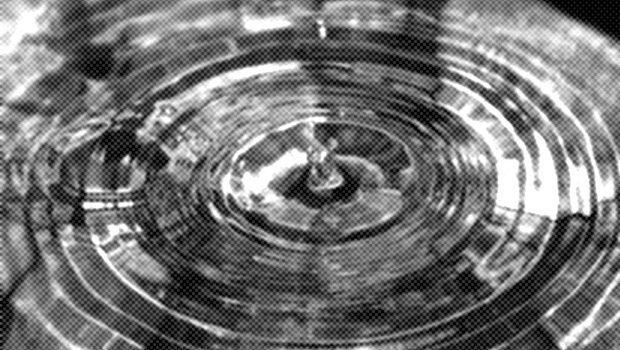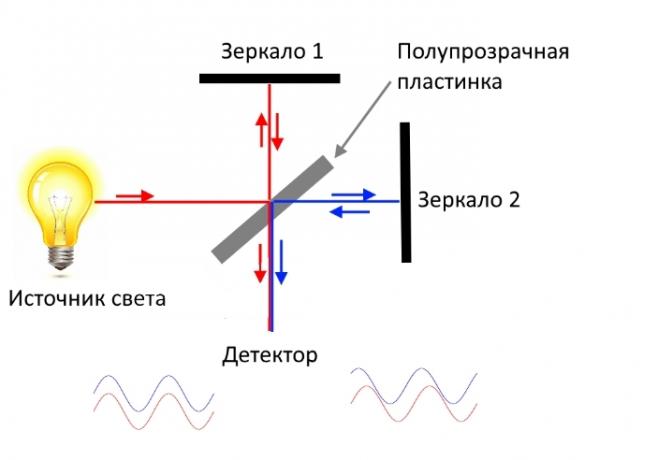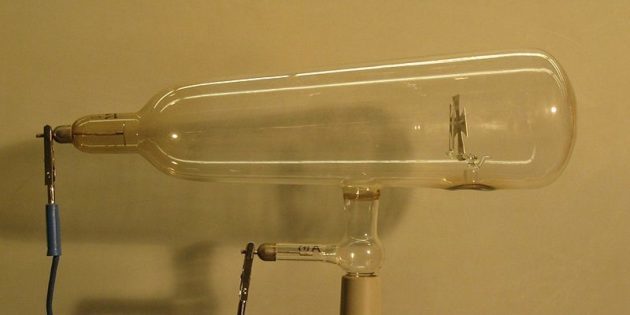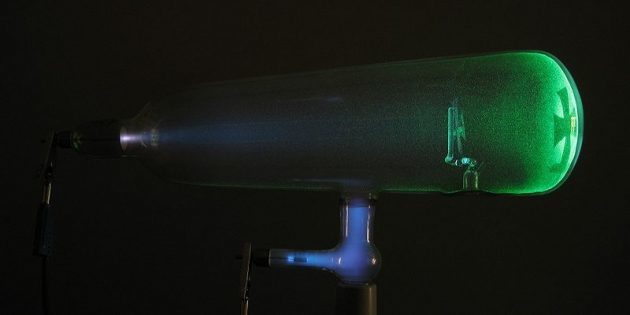As Albert Einstein fought for the European world and theoretical physics
Forming / / December 19, 2019
At the beginning of the twentieth century in physics were made tremendous discoveries, some of which belonged to Albert Einstein, the creator of the general theory of relativity.
Scientists are on the verge of an entirely new view of the universe, which is required of them intellectual courage, ready to plunge into the theory and skills to deal with complex mathematical apparatus. Call it received, not all, and, as it happens, on the scientific debate superimposed political differences caused by the first World War I, Then - the coming to power of Hitler in Germany. Einstein and immediately proved a key figure around which broke the spear.
Einstein against all
The First World War was accompanied by a patriotic upsurge among the population of the States Parties, including the scientists.
In Germany in 1914, 93 scientists and artists, including Max Planck and Fritz Haber Wilhelm Roentgen, published a manifesto, expresses full support for the government and the war, which it leads: "We, the representatives of German science and art, to declare all cultural world protest against lies and calumny, which our enemies are trying to contaminate the right thing in Germany imposed on it a heavy struggle for Existence.
<...> Without German militarism German culture would have been destroyed a long time ago in the bud. German militarism is a derivative of the German culture, and he was born in a country that, like no other country in the world subjected to for centuries, plundering raids. "
However I found a German scientist, who spoke strongly against such ideas. Albert Einstein published in 1915 a return manifesto "Europeans": "Never before since the war had not violated the interaction of cultures. <...> The duty of Europeans who have education and good will - not afford to give in Europe. " However, this appeal, except for the Einstein signed only three people.
German scientist Einstein became quite recently, though born in Germany. School and university he graduated in Switzerland, and then almost ten years, various European universities refused him admission to work. This was partly due to the fact how Einstein turned to consider his candidacy.
Thus, in a letter to Paul Drude, the creator of the electron theory of metals, he first pointed out two errors in his theory, and only then asked to take on the job.
As a result, Einstein had to settle in the Swiss patent office in Bern, and only at the end of 1909, he was able to get a position in the University of Zurich. And already in 1913, Max Planck himself with the future Nobel Prize winner in Chemistry Walther Nernst personally arrived in Zurich to persuade Einstein to take German citizenship, move to Berlin and become a member of the Prussian Academy of Sciences and Director of the Institute Physics.

The work was for Einstein in the patent office amazingly productive from a scientific point of view. "When someone walked by, I shoved her notes into a drawer and pretended to be engaged in patent work," - he recalled. 1905 went down in history as a science annus mirabilis"Annus mirabilis".
This year in the journal Annalen der Physik were four articles of Einstein, in which he was able to theoretically describe Brownian motion explained, using Planck idea of light quanta, photoelectric effect, or electron emission from a metal effect when irradiated with light (in that J. experiment. J.. Thomson discovered the electron), and make a decisive contribution to the creation of the special theory of relativity.
Amazing coincidence: the theory of relativity appeared almost simultaneously with the quantum theory, and just as suddenly and irrevocably changed the foundations of physics.
In the XIX century it was firmly established the wave nature of light, and scientists are interested in the structure of the substance, in which the waves propagate.
Despite the fact that no one has yet seen the air (so-called this substance) directly, no doubt, that it exists and permeates the entire The universe did not arise: it was clear that the wave should be extended to some elastic medium, similar to the circles from a stone thrown in the water: water surface at the point of incidence stone begins to oscillate, and as it is elastic, the vibrations are transmitted to the neighboring point from them - to neighboring and etc. The existence of physical objects that can not be seen with the help of available instruments, after the discovery of atoms and electrons, too, is no surprise.
One simple questions that classical physics could not find an answer, was: is interested in whether the air moving bodies in it? By the end of the XIX century some experiments clearly showed that the ether is fully entrained by moving bodies, and others, and not less than convincingly - that is interested only in part.

Circles on water - one example of a wave in an elastic medium. If no moving body carries ester of a, the speed of light relative to the body will consist of the speed of light relative to the ether and most of the body velocity. If it fully carries ester (as occurs when moving in a viscous liquid), the speed of light relative to the body is equal to the speed of light relative to the ether and does not depend on the speed of the body.
French physicist Louis Fizeau in 1851 year showed that the ester of partially interested in a moving stream of water. In a series of experiments 1880-1887's American Albert Michelson and Edward Morley, on the one hand, confirmed with greater accuracy Fizeau conclusion and with the other - we found that the Earth rotates around the sun, completely carries the ether along, that is, the speed of light in the world does not depend on how it moves.
To determine how the earth moves relative to the ether, Michelson and Morley constructed a special device, an interferometer (see. scheme below). Light from the source falls on the semitransparent plate, is partially reflected from a mirror 1 and partially passes to the mirror 2 (the mirror are equidistant from the plate). The beams reflected from the mirrors, then re-enter on a translucent plate and from it come together at the detector, where an interference pattern.

When the earth moves relative to the ether, for example in the direction of the mirror 2, then the speed of light in the horizontal and vertical directions will not match, which should lead to a shift of wave phases reflected from different mirrors to the detector (e.g., as shown in the diagram, bottom right). In reality, the displacement was not observed (see. Lower Left).
Einstein vs. Newton

In an attempt to understand the movement of ether and light propagation in it Lorentz and French mathematician Henri Poincaré had suggest that the size of the moving bodies are changing as compared with the size of fixed and, moreover, the time for moving bodies flows more slowly. It is difficult to imagine - and Lorentz regarded these assumptions more like a mathematical trick than to physical effect - but they are allowed to agree on the mechanics, electromagnetic theory of light and the experimental data.
Einstein in two articles in 1905 could on the basis of intuitive considerations to create a coherent theory, in which all these amazing effects are the result of two postulates:
- velocity of light is constant and does not depend on how the move source and receiver (and is approximately equal to 300,000 km / s);
- to any physical system physical laws are the same regardless of whether it is moving without acceleration (at any speed) or at rest.
And he brought the most well-known physical formula - E = mc2! Furthermore, due to movement of the first postulate ether ceased have a value Einstein simply abandoned it - the light can propagate in vacuum.

The effect of time dilation, in particular, leads to the famous "twin paradox". If one of the two twins, Ivan, is sent on a spacecraft to the stars, and the second, Peter, is still waiting for him on the earth, after return turns out that Ivan had aged less than Peter, because the time for him to move fast spaceship flowed more slowly than Earth.

This effect, as well as other differences between the theory of relativity from the ordinary mechanics, shown only at a huge speed, comparable to the speed of light, and so we never encountered them in their daily life. For normal speed with which we meet in the world, the fraction v / c (recall, c = 300,000 kilometers per second) differs very little from the ground, and we return to a familiar and comfortable world of school mechanics.
Nevertheless, the effects of relativity must be considered, e.g., when synchronizing clock to GPS satellites, with terrestrial system for precise work positioning system. In addition, the slowing down time effect is the investigation of elementary particles. Many of them are unstable and in a very short time transformed into the other. Usually, however, they quickly move, and thus time before converting them to the observer's point of view is stretched, which allows them to register and investigate.
The special theory of relativity arose from the need to reconcile the electromagnetic theory of light with the mechanics quickly (and at a constant speed) of moving bodies. After moving to Germany, Einstein completed his theory of general relativity (GR), which added to the electromagnetic and mechanical phenomena of gravity. It turned out that the gravitational field can be described as a deformation of space and time by a massive body.
One consequence of the curvature of GR is the beam path when light passes near a large mass. The first attempt at experimental verification of general relativity was to be held in the summer of 1914 under the supervision of a solar eclipse in the Crimea. However, the German team of astronomers was interned in connection with the war. It is in a sense saved GRT reputation since that time theory contain errors and gave an incorrect prediction of the angle of deflection of the beam.
In 1919, British physicist Arthur Eddington during the solar eclipse observation on the island of Principe off the west coast of Africa was able to confirm that the light star (he was seen by the fact that the sun was not eclipsed), passing by the Sun is deflected by exactly an angle, which predict the equation Einstein.
Opening Eddington made Einstein a superstar.
Seventh day of November 1919, at the height of the Paris Peace Conference, when all the attention, it would seem, should be focused on how the world will be exist after the First World War, the London newspaper The Times came out with an editorial: "The revolution in science: a new theory of the universe, Newton's ideas defeated. "
Reporters pursued Einstein everywhere, harassing requests to explain the theory of relativity in a nutshell, and the halls, where He gave public lectures, were filled with (in this case, according to contemporaries, Einstein was not very good lecturer; students had little understanding of the essence of the lecture, but still came to see a celebrity).
In 1921, Einstein together with an English biochemist and future President of Israel Chaim Weizmann I went on a lecture tour of the United States to raise funds to support Jewish settlements in Palestine. According to The New York Times, «The Metropolitan Opera were busy all the places from the orchestra pit to the last row galorki, hundreds of people standing in the aisles." Correspondent emphasized: "Einstein spoke German, but eager to see and hear the person, which complemented the scientific concept of the universe with a new theory of space, time and movement, occupied all the seats in hall. "
Despite the success of the general public, the scientific community theory of relativity was received with great difficulty.
From 1910 to 1921 progressive-minded colleagues ten times nominated Einstein for the Nobel Prize in physics, but conservative every time the Nobel committee refused, citing the fact that the theory of relativity has not yet received sufficient experimental confirmation.
After the expedition, Eddington it all began to give greater scandal, and in 1921, still not convinced the committee members took an elegant solution - award Einstein Award, did not mention the theory of relativity, namely: "For services to theoretical physics and especially for his discovery of the law of the photoelectric effect. "
Aryan physics against Einstein

Einstein's popularity in the West caused a painful reaction of colleagues in Germany, which were virtually isolated after militant manifesto of 1914 and the defeat in the First World War. In 1921, Einstein was the only German scientist who received an invitation to the World Solvay Physics Congress in Brussels (which he, however, ignored in favor of a trip to the US with Weizmann).
At the same time, despite ideological differences, with the majority of patriotic colleagues Einstein managed to maintain friendly relations. But the extreme right-wing students and scientists, Einstein gained a reputation as a traitor who knocks German science astray.
One of the representatives of this wing was Philipp Lenard. Despite the fact that in 1905 for an experimental study of electrons, resulting in the photoelectric effect, Lenard received the Nobel Prize in physics, he always suffered from the fact that its contribution to science is not recognized enough degree.
Firstly, in 1893, he borrowed the discharge tube homemade Roentgen, and in 1895, Roentgen discovered that the discharge tubes emit hitherto unknown to science rays. Leonard believes that the opening should at least be considered as a joint, but all the glory of the discovery and the Nobel Prize in Physics in 1901 went to one Roentgen. Lenard was indignant and said that is the mother-rays, while the X-ray is only a midwife. In this case, apparently, in the decisive experiments X-ray tube Lenard still not used.


Second, Lenard was much offended by the British physicist. He challenged the priority of discovery of the electron in Thomson and accused the British scientist that he incorrectly refers to his work. Lenard created a model of the atom, which can be considered the forerunner of the Rutherford model, but it was not marked properly. Not surprisingly, Leonard called the English a nation of selfish and deceitful traders, and the Germans, on the contrary - the nation heroes and after the First World War, offered to arrange a British intellectual Continental blockade.
Third, Einstein was able to theoretically explain the photoelectric effect, and Lenard in 1913, even before the controversy related to the war, even recommended him for a professorship. But the Nobel Prize for his discovery of the law of the photoelectric effect in 1921 gave one Einstein.
The beginning of the 20s in general were a difficult time for Lenard. He clashed with left-wing ideas with enthusiasm by students and was publicly humiliated when, after the murder of the Jewish liberal policies origin, and German Foreign Minister Walter Rathenau refused to dip the flag to his institute building Heidelberg.
His savings invested in debt securities of government, were burned as a result of inflation, and in 1922 from the effects of malnutrition during the war, the death of his only son. Lenard became inclined to believe that the problem of Germany (including the German Science) are the result of a Jewish conspiracy.
A close associate of Lenard at this time became Johannes Stark, the Nobel Prize in Physics in 1919, also tend to blame their own failures in the machinations of the Jews. Stark after the war, as opposed to liberal Physical Society organized the conservative "German professional community college teachers ", with which tried to control the funding of research and the appointment to the scientific and teaching positions, but not He succeeded. After failing to protect a graduate student in 1922, Stark said that is surrounded by admirers of Einstein, and resigned from the post of university professor.
In 1924, six months after the Beer Hall Putsch in Grossdeutsche Zeitung newspaper published an article by Lenard and Stark, "Hitler and the spirit of science." The authors compared Hitler with such giants of science as Galileo, Kepler, Newton, and Faraday ( "What happiness, that the genius in the flesh live among us! "), and also praised the Aryan genius and condemned his decomposing Judaism.
According to Lenard and Stark, science pernicious Jewish influence manifested itself in new areas of theoretical physics - quantum mechanics and relativity theory, demanding rejection of old ideas and use a complex and unfamiliar mathematical apparatus.
For the older generation of scientists, even those talented as Leonard, it was a challenge that few have been able to accept.
Lenard opposed the "Jewish", that is, theoretical physics "Aryan", that is experimental, and demanded that German science has focused on the latter. In the preface to the book "German Physics", he wrote: "The German physicist? - Ask people. I could also say the Aryan physics, or physics Nordic people whistleblowers physics, physics of those who founded the study of natural science. "

For a long time, "Aryan physics" Lenard and Stark remained a marginal phenomenon, and different physics origin were engaged in Germany, theoretical and experimental research of the highest level.
Everything changed when in 1933 became Chancellor of Germany Adolf Hitler. Einstein, who was at that time in the United States, refused German citizenship and membership in the Academy of Sciences and Academy president Max Planck welcomed the decision: "Despite the deep gulf between our political views, our personal friendship will always remain unchanged," - he assured Einstein's personal correspondence. However, some members of the Academy have been annoyed by the fact that Einstein did not have time demonstratively excluded from it.
Soon Johannes Stark became president of the Physical-Technical Institute and the German Research Foundation. Over the next year Germany has left a quarter of all physicists and theoretical physicists half.



